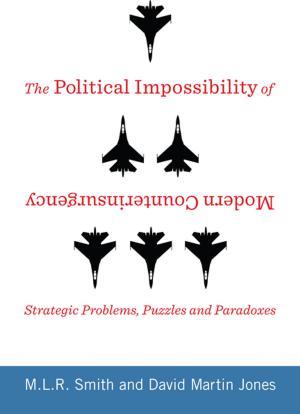Desire and the West: Market, State and the Containment of Armageddon
Nonfiction, History, Modern, Social & Cultural Studies, Political Science| Author: | Luca Luchesini | ISBN: | 9781310665585 |
| Publisher: | Luca Luchesini | Publication: | October 23, 2013 |
| Imprint: | Smashwords Edition | Language: | English |
| Author: | Luca Luchesini |
| ISBN: | 9781310665585 |
| Publisher: | Luca Luchesini |
| Publication: | October 23, 2013 |
| Imprint: | Smashwords Edition |
| Language: | English |
What has given the West its supremacy over other civilizations in the last few centuries? And why the main cultures that compose it are undergoing a seemingly endless process of calling to responsibility and self-blaming for all the inequalities and problems that plague the world? At the same time where Western cultures are celebrating their decline, how come their competitors recur to typical Western inventions like the free market, the sovereign state and also the defense of the rights of the victims to fuel their rise and substantiate their claims? This essay tries connecting the dots between three works that shed a new light on the peculiarity of Western civilization, using the mimetic theory of Rene’ Girard as main interpretation tool. The first one is “Civilization. West and the Rest” by Niall Ferguson, where the Harvard historian tries to identify what he calls the “killer applications” that made the political and economic rise of the West unstoppable in the Modern era (from ca. 1500 to present day). The second one is “The Jewish Century” by Yuri Slezkine, a professor of history at Berkeley that focuses on the role of the Jews in the development of Eastern European society in the late 1800 and early 1900 and their prominent role both in the Soviet Revolution and in the rise of American Capitalism. Finally, the third one is an essay by Massimo Cacciari, an Italian philosopher and politician that provides a new interpretation to the “katechon” concept expressed by Saint Paul in his second epistle to the Thessalonians. The three works address very different aspects of the Western civilization, ranging from political theology to economic and social analysis. Yet I try to demonstrate that all three can be derived from a common interpretation framework grounded on the principles of mimetic theory developed by Rene’ Girard and his school. According to mimetic theory, the main differentiator of Western civilization with respect to the others lies in the revelation of the scapegoat mechanism enabled by the Judeo-Christian tradition that progressively lifts all ritual and mythical barriers and unleashes human desire that due to its mimetic and triangular nature cannot but spark emulation and competition between people. In this process, Market and State are the modern structures developed to contain desire, where containing means at once being in a position to limit its excesses but also having desire as part of one own nature. The book is structured as follows: Chapter 1 starts with the exposition of Niall Ferguson findings. Chapter 2 connects them to the role of the Jews in modernity as explained by Yuri Slezkine. Chapter 3 starts applying mimetic theory and shows how the theory puts the works of Ferguson and Slezkine in a common perspective. Chapter 4 explores the apocalyptic implications of mimetic theory as exposed in the works of Girard and his scholars and puts them in connection with Massimo Cacciari research around the Apocalypse as anticipated by Saint Paul. Finally, Chapter 5 sketches some lines of further reflection about the meaning of Modernity at large and what it might mean evolving beyond it.
What has given the West its supremacy over other civilizations in the last few centuries? And why the main cultures that compose it are undergoing a seemingly endless process of calling to responsibility and self-blaming for all the inequalities and problems that plague the world? At the same time where Western cultures are celebrating their decline, how come their competitors recur to typical Western inventions like the free market, the sovereign state and also the defense of the rights of the victims to fuel their rise and substantiate their claims? This essay tries connecting the dots between three works that shed a new light on the peculiarity of Western civilization, using the mimetic theory of Rene’ Girard as main interpretation tool. The first one is “Civilization. West and the Rest” by Niall Ferguson, where the Harvard historian tries to identify what he calls the “killer applications” that made the political and economic rise of the West unstoppable in the Modern era (from ca. 1500 to present day). The second one is “The Jewish Century” by Yuri Slezkine, a professor of history at Berkeley that focuses on the role of the Jews in the development of Eastern European society in the late 1800 and early 1900 and their prominent role both in the Soviet Revolution and in the rise of American Capitalism. Finally, the third one is an essay by Massimo Cacciari, an Italian philosopher and politician that provides a new interpretation to the “katechon” concept expressed by Saint Paul in his second epistle to the Thessalonians. The three works address very different aspects of the Western civilization, ranging from political theology to economic and social analysis. Yet I try to demonstrate that all three can be derived from a common interpretation framework grounded on the principles of mimetic theory developed by Rene’ Girard and his school. According to mimetic theory, the main differentiator of Western civilization with respect to the others lies in the revelation of the scapegoat mechanism enabled by the Judeo-Christian tradition that progressively lifts all ritual and mythical barriers and unleashes human desire that due to its mimetic and triangular nature cannot but spark emulation and competition between people. In this process, Market and State are the modern structures developed to contain desire, where containing means at once being in a position to limit its excesses but also having desire as part of one own nature. The book is structured as follows: Chapter 1 starts with the exposition of Niall Ferguson findings. Chapter 2 connects them to the role of the Jews in modernity as explained by Yuri Slezkine. Chapter 3 starts applying mimetic theory and shows how the theory puts the works of Ferguson and Slezkine in a common perspective. Chapter 4 explores the apocalyptic implications of mimetic theory as exposed in the works of Girard and his scholars and puts them in connection with Massimo Cacciari research around the Apocalypse as anticipated by Saint Paul. Finally, Chapter 5 sketches some lines of further reflection about the meaning of Modernity at large and what it might mean evolving beyond it.















